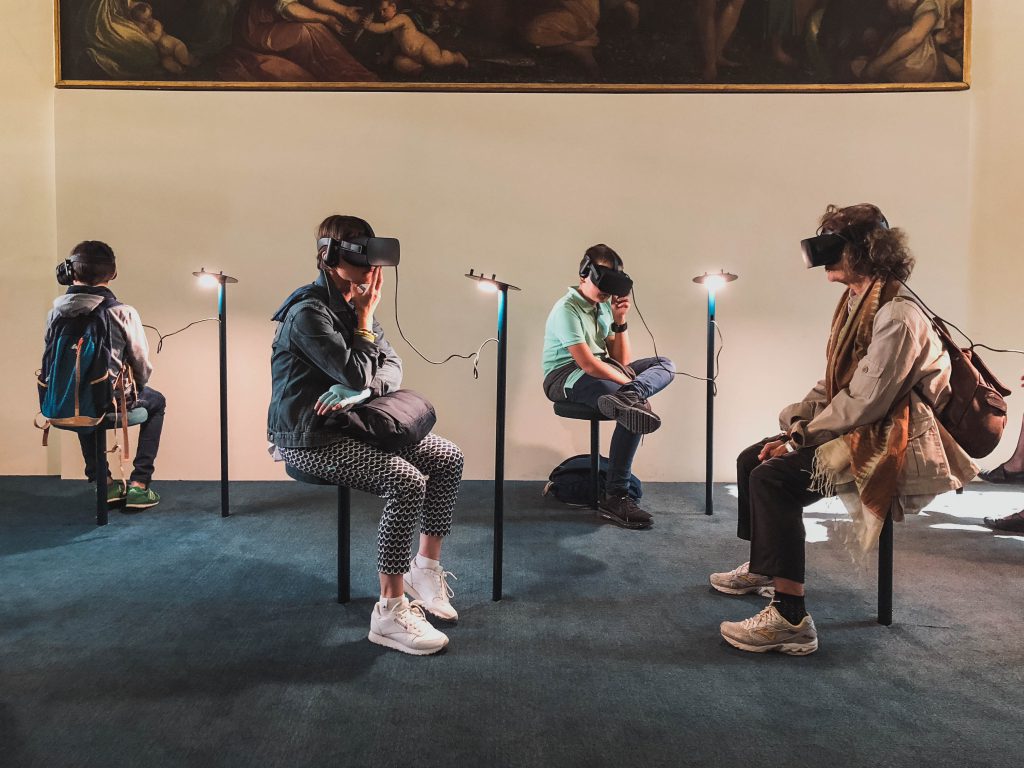How Digital Learning Can Expand Learner Pathways and Increase Enrollment
Published by: WCET | 8/10/2023
Tags: Distance Education, Enrollment, Enrollment Shift, Managing Digital Learning, Online Learning, Student Success
Published by: WCET | 8/10/2023
Tags: Distance Education, Enrollment, Enrollment Shift, Managing Digital Learning, Online Learning, Student Success
Welcome to the third and final post in our series on higher education enrollment shifts. In our first post, the WCET Steering Committee work group focusing on this area reviewed historical enrollment trends, changes in student markets, and what may be coming in the future. In the second post, the work group discussed ways higher education institutions are responding to the shifts in enrollment.
Today, Patti O’Sullivan, who coordinated the work group, joins us for a final reflection on enrollment and shares ways digital learning can impact enrollment by expanding paths for learners.
Enjoy the read,
Lindsey Downs, WCET
When I first began teaching online in 2005, it came as no surprise that most of my students were working adults who had previously abandoned their bachelor’s programs. I loved how my university was offering these students a second chance to earn their degree without the additional burden of having to come to campus multiple times a week. A few years later, the student profile shifted in my online courses. In 2010, I had lots of student athletes, a few expectant mothers, and students transferring into the university who had not yet moved to town. In 2013, even the courses I traditionally taught on campus moved online when my family temporarily relocated abroad during my spouse’s sabbatical year. When I returned to campus the next year, students in my face-to-face classes began requesting the same access to course materials I provided for my online students: such as lecture slides and notes, video alternatives to the text, and the option to complete quizzes and assignments online. These days I only teach online. It was a choice my department made because of scheduling and classroom space limitations. Most of my students are traditionally aged and take most of their classes on campus. They might be in my class because of scheduling conflicts or because all the face-to-face sections were full when they registered for classes.
What the last eighteen years of teaching online has taught me is that digital learning spaces and tools have not only expanded access to students, but they have also expanded the types of learning opportunities institutions can offer everyone in the community.

Digital learning, which I define as any learning environment that uses digital technologies, is everywhere. Just in my own campus community, I have seen digital learning used at multiple levels of education and for various educational purposes. The local high school has a virtual school for students off campus to access classes and for students on campus who work better in a monitored virtual learning environment. In addition, students at the high school can take online dual enrollment courses for college credit. My university offers hundreds of undergraduate online courses, with a handful of fully online degree programs. Professional schools have long offered hybrid and fully online advanced degree programs as well as certificate programs, professional continuing education units (CEUs), and specific skills training for software applications, first aid, and grant-writing. Employees of the institution must complete yearly online training courses in cyber security and compliance, with dozens of other optional training courses tailored to specific departments and workloads. Finally, the institution is experimenting with Virtual Reality tools to provide training and educational opportunities that may be otherwise cost-prohibitive, ethically prohibitive, or dangerous.
There are four primary ways in which digital learning can expand learner pathways:
Working adults, caregivers, student athletes, and countless others use digital learning to achieve their educational and professional goals. Digital learning allows them to continue to work full time, enroll in school full time, and to mitigate the risk of lost time, money, and opportunity due to scheduling conflicts. The most common application of the flexible course schedule is asynchronous online courses.
This benefit often overlaps with the benefit of flexible scheduling, but there is much more to the location flexibility of digital learning. Dozens of programs and even entire universities have been established for active military, veterans, and their families. These programs allow their students, who often move frequently and suddenly, to stay on track with their educational goals. Students living in rural locations, students with health concerns, and those with limited mobility also benefit from online programs or hybrid programs with local campus options or minimal location requirements. A long-established example of location flexibility is universities live streaming classes from the main campus to satellite campuses. Mary Ann Gufstason, Executive Director of Marketing and Communication, Purdue University Online, said it best in an interview with The EvoLLLution, “Focusing on the student experience infrastructure is critical. Accessing information policies, enrollment policies and minimum credit policies isn’t student-friendly. Institutions have to take a step back and think about what hasn’t changed and what needs to change to serve more nontraditional students.”
What began as digital learning tools to help students with disabilities such as voice-to-text converters and screen readers, has now grown into tools that benefit non-native speakers and students learning in specific environments that pose limitations on audio, keyboard access, and Wi-Fi. Closed captioning is a great example of an assistive technology designed for the deaf community that also helps viewers who struggle to understand unfamiliar accents, viewers who need to maintain a low volume as a courtesy to others, and viewers who prefer to print out a transcript to read and annotate.

The virtual field trip saves time and money with transportation, but also allows teachers to bring students to learning environments they could never access even with an unlimited amount of time and money.
Using virtual reality and augmented reality technologies, students can experience the past, go deep into space or into the human body, and experience dangerous weather events. Virtual reality also enables schools to avoid the high cost and ethical issues relating to animal dissection and chemical waste. Virtual meeting software allows schools to connect students to speakers without the additional financial and environmental costs of bringing them to campus.
Digital learning also empowers institutions to collaboratively design learning spaces for their students such as the Southern Regional Education Board’s HBCU-MSI Course-Sharing Consortium. Another example of such collaboration is the United Negro College Fund (UNCF) partnership with Deloitte Digital, which is developing an online learning platform and community called HBCUv to engage and connect HBCU communities across the country.
Finally, the League for Innovation Online Course Sharing Consortium allows students at its member institutions to take online courses at other institutions to support progress and completion without having to enroll in the partner institution or cede course credit at their home institution. Hundreds of community colleges are already members of the League and the goal of the non-profit is to expand course sharing benefits across the United States and even to international institutions.
In a time of concern over declining enrollments of traditional students seeking traditional learning experiences, institutions should remain mindful of how digital learning tools have changed who is invited into higher education learning spaces and what kinds of learning experiences they can offer. Because of inherent biases, we need to reflect on assumptions within the status quo, and where and how digital learning can advance an institution’s mission and expand (or limit) other learners in intentional ways. Intentionality and decision-making at this crossroad will be important for future investments and justifications for approaches.